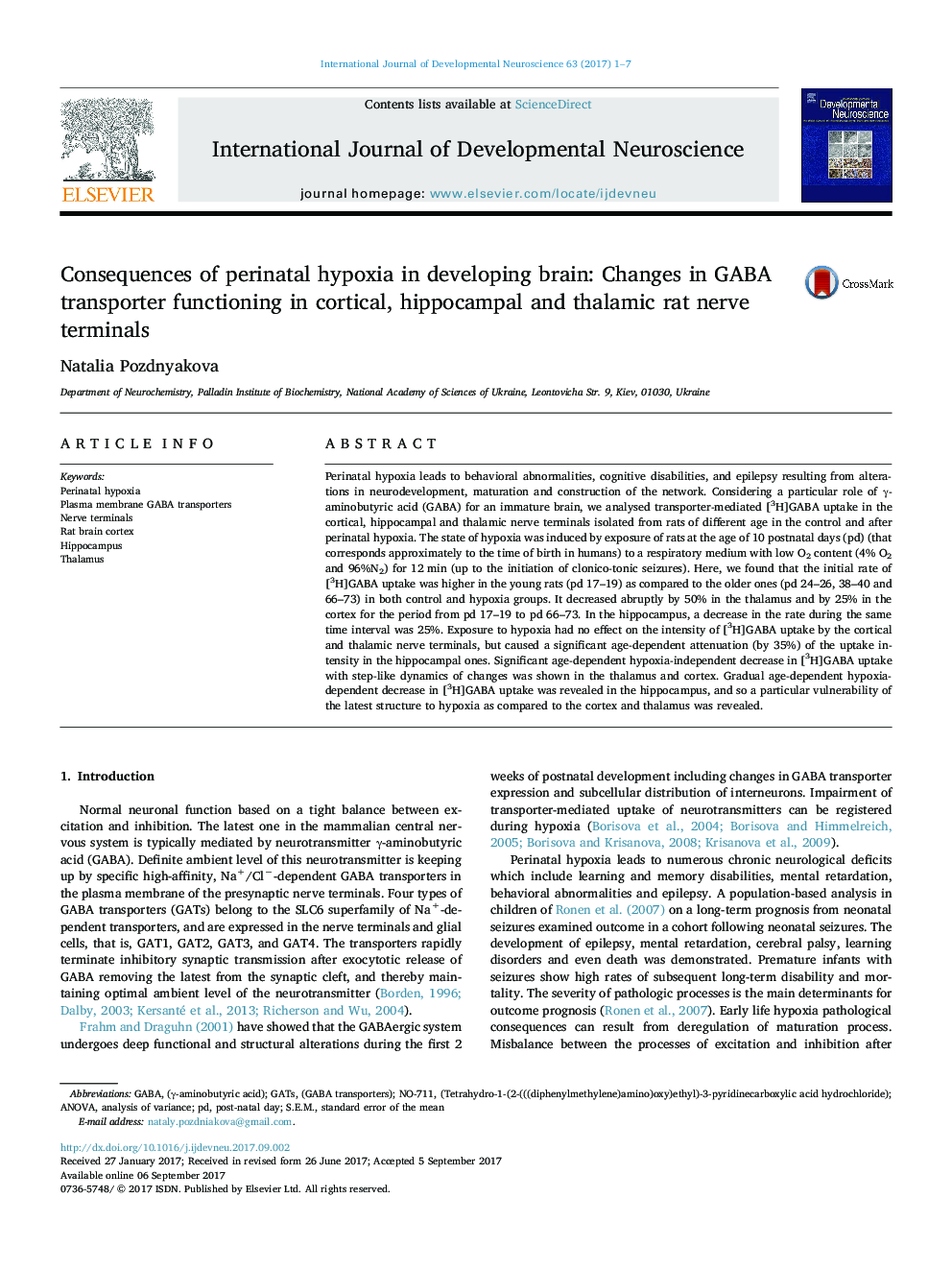| Article ID | Journal | Published Year | Pages | File Type |
|---|---|---|---|---|
| 5585728 | International Journal of Developmental Neuroscience | 2017 | 7 Pages |
Abstract
Perinatal hypoxia leads to behavioral abnormalities, cognitive disabilities, and epilepsy resulting from alterations in neurodevelopment, maturation and construction of the network. Considering a particular role of γ-aminobutyric acid (GABA) for an immature brain, we analysed transporter-mediated [3H]GABA uptake in the cortical, hippocampal and thalamic nerve terminals isolated from rats of different age in the control and after perinatal hypoxia. The state of hypoxia was induced by exposure of rats at the age of 10 postnatal days (pd) (that corresponds approximately to the time of birth in humans) to a respiratory medium with low O2 content (4% O2 and 96%N2) for 12 min (up to the initiation of clonico-tonic seizures). Here, we found that the initial rate of [3Ð]GABA uptake was higher in the young rats (pd 17-19) as compared to the older ones (pd 24-26, 38-40 and 66-73) in both control and hypoxia groups. It decreased abruptly by 50% in the thalamus and by 25% in the cortex for the period from pd 17-19 to pd 66-73. In the hippocampus, a decrease in the rate during the same time interval was 25%. Exposure to hypoxia had no effect on the intensity of [3Ð]GABA uptake by the cortical and thalamic nerve terminals, but caused a significant age-dependent attenuation (by 35%) of the uptake intensity in the hippocampal ones. Significant age-dependent hypoxia-independent decrease in [3Ð]GABA uptake with step-like dynamics of changes was shown in the thalamus and cortex. Gradual age-dependent hypoxia-dependent decrease in [3Ð]GABA uptake was revealed in the hippocampus, and so a particular vulnerability of the latest structure to hypoxia as compared to the cortex and thalamus was revealed.
Keywords
Related Topics
Life Sciences
Biochemistry, Genetics and Molecular Biology
Developmental Biology
Authors
Natalia Pozdnyakova,
